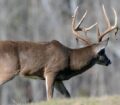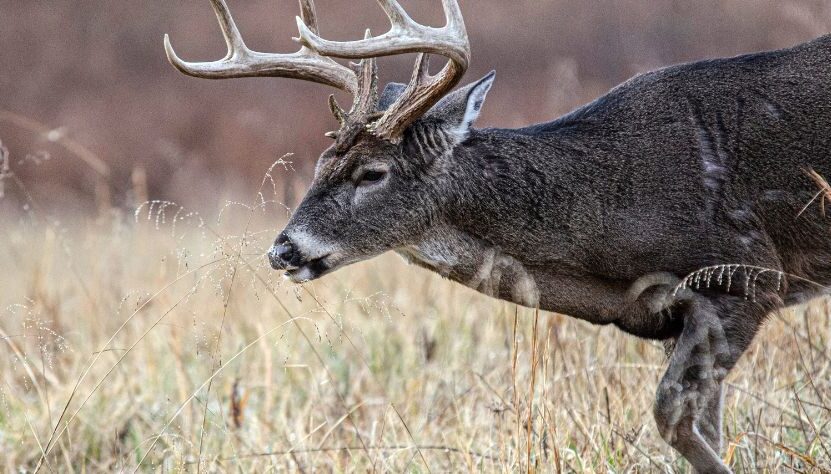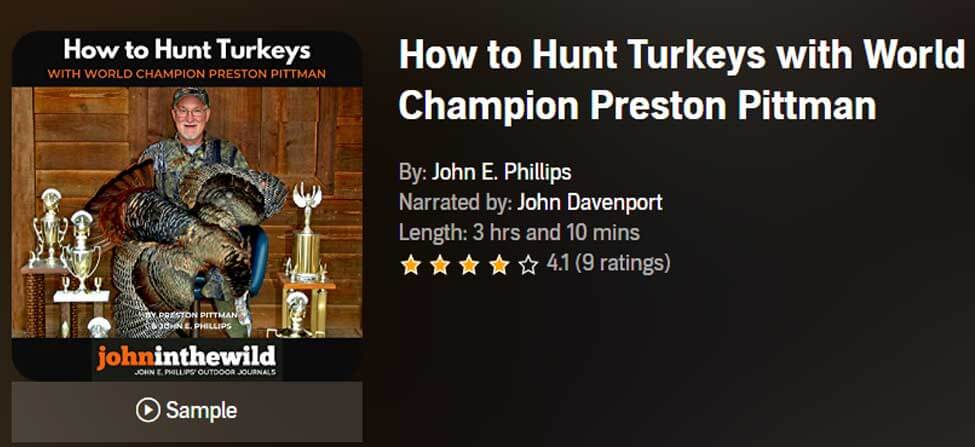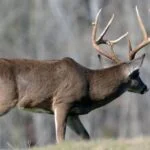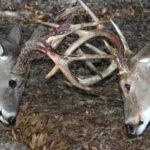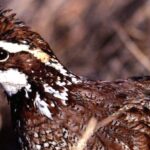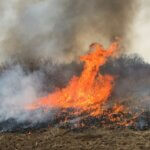Editor’s Note: Start now to manage your hunting lands for maximum wildlife production by following these ideas on your hunting property or hunting lease. JITW spoke with Chuck Sykes, the Director of Wildlife and Freshwater Fisheries in the Alabama Department of Conservation and Natural Resources (DCNR), about how the State of Alabama is meeting the growing demand for public-land deer and turkey hunters to have opportunities to hunt lands intensively managed for wildlife like owners manage their private lands. As new public lands have become available to be purchased by the Game & Fish Division, this division has implemented land-management practices in these areas to improve them for maximum wildlife production and older-age-class animals. The DCNR also has limited access to these lands through a drawing system similar to western states’ hunting permit trophy areas. These strategies, when used, can help you improve the land you hunt if you own the land or have the landowner’s permission to implement these land-management tactics.
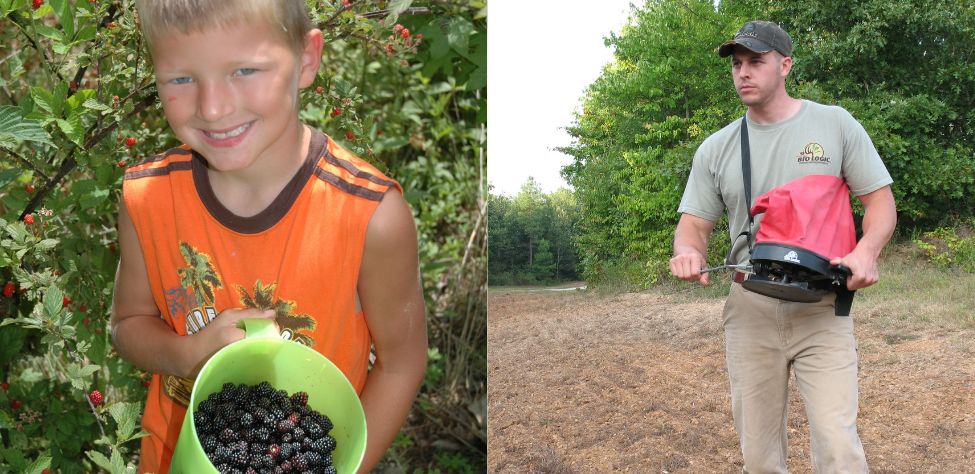
Deer are browsers, and although they have their preferred food sources, they feed on various crops and native plants in pastures and clear-cuts, under utility lines, along the edges of railroad tracks and ponds, and on logging roads and landings. For the first three years after a clear-cut is made, a tremendous amount of browse is available for deer in that clear-cut. If you know the native plants that deer feed on in the area you hunt, you drastically can increase your odds of finding and taking a buck if you fertilize those plants.
Know What Deer Are Feeding on Currently:
Dr. Grant Woods is one of the nation’s best-known deer researchers. When I interviewed him, I asked, “How do you decide where to hunt deer?” He answered, “First when I reach my hunting site, I shoot a doe, take her back to the cleaning shed, and check her stomach cavity’s contents. Those stomach contents tell me what food she’s been feeding that day. More than likely, that’s the same food source other deer in the area will be eating when I’m hunting them.”
Find Trash Piles and Skips:
For years, sportsmen have believed that a pine plantation with overhead-high trees is a biological desert. However, biologists have learned that highly nutritious deer food can be found in the almost-impenetrable young pines in these pine plantation trash piles and skips. When land is clear-cut, loggers often pile up limbs and non-commercial trees they’ve cut down, usually called trash piles, and burn the wood. The ashes of these trash piles grow in native deer food, especially greenbrier and blackberries. Too, the pine trees in some parts of a pine plantation may not increase, resulting in openings for wildlife and providing numbers of native plants for deer to eat.
Today, you can use a drone to fly over these young pines to pinpoint openings. (Be sure to check your state’s regulations regarding flying drones.) Then, you can move into the pines and use some granular or liquid fertilizer you’ve transported in a backpack.
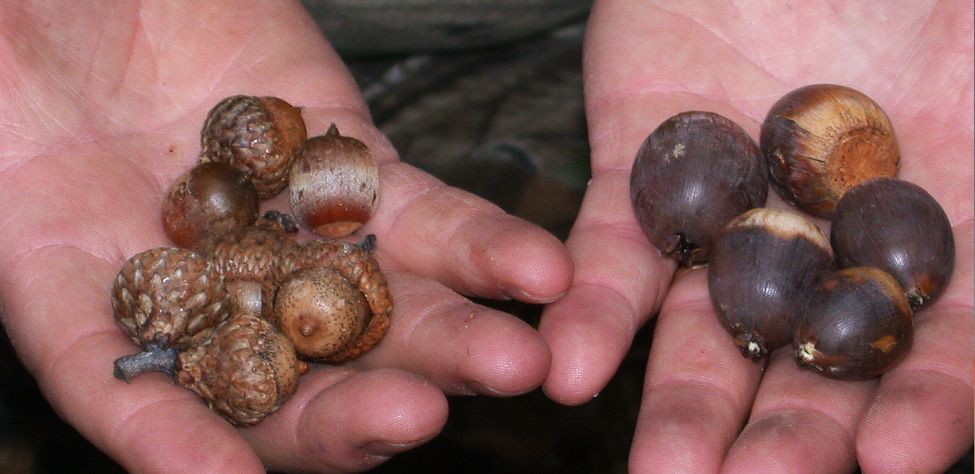
Learn Primary Deer Foods to Fertilize:
Due to their slender and long tongues, whitetails can extract leaves and succulent stems of plants easily to eat.
- American Persimmon – Native to North America, this these hardy trees were popular among Native Americans. Fertilizing them will increase the amount of fruit the trees produce and create invisible, early-season bowhunting opportunities.
- Beggar’s Lice – Although generally considered a nuisance when it sticks to your clothes, beggar’s lice has a crude protein level of 28.2%, making it a perfect food for deer, as well as for songbirds, bobwhites, turkeys, ruffed grouse and mourning doves.
- Berries – Deer love wild blueberries, including the twigs, stems and leaves of these plants.
- Blackberries – These dense thorny bushes produce delicious fruit. During the winter months, deer feed heavily on blackberry leaves also.
- Fruit Trees – Peach, apple, cherry, and plum trees are all well-loved by deer.
- Greenbrier – Deer eat the greenbrier’s tender shoots and leaves as they emerge in late winter when other food sources have disappeared. Deer will eat older mature leaves and stems as well.
- Honey Locust Pods – These plants can cause serious problems as an invasive species, but deer love it. Fertilize the dripline of the honey locust in the early spring.
- Mushrooms – Thousands of types of mushrooms grow wild. Deer enjoy many varieties of mushrooms that are often easy to spot.
- Nuts – Deer like nuts but also the leaves on many nut trees. They particularly like hickory nuts that contain omega-3 fatty acids and vitamin E and hazelnuts that have a high nutritional value.
- Oak Acorns – Acorns contain more energy than corn, two times the amount of carbohydrates, and up to 10 times the amount of fat. White oak acorns tend to be preferred by deer, but they’ll also eat bitter red oak acorns and other acorn varieties.
- Old-Field Asters—Old-field asters are a persistent herbaceous native perennial that contains 23.3% crude protein and provides great cover for deer.
- Old-Field Common Junipers – This groundcover evergreen grows 3-4 feet tall and 6 feet wide, and its fruit ripens in the autumn and through the winter.
- Ragweed – Although this plant is tough on hunters with allergies, it can be very important to deer, since it it contains 17.8% crude protein.
- Raspberries- Raspberries are very hardy and can withstand a wide range of temperatures.
- White Cedars – They grow in many places and thickets, providing shelter and food for deer.
- Wild Grapes – These plants grow in various places, and deer love to eat them.
Understand What Turkeys Eat:
Turkeys are omnivores, so they eat just about anything. Their favorites include bugs, tender greens, acorns, berries, corn, soybeans, sorghum, milo, sunflowers, chufa, and other seeds and grains.
Looking for more content? Check out our YouTube channel and watch “Hunting Before the Storm with Bob Sheppard” by John E. Phillips.

How to Hunt and Take Big Buck Deer on Small Properties
In this book, you’ll hear from 14 hunters who either have gained permission or leased properties as small as six acres to as much as 250 acres, and how they consistently take older-age-class bucks off these little lands.
VERSIONS: AUDIBLE, KINDLE & PRINT

Jim Crumley’s Secrets of Bowhunting Deer
Using a black magic marker and a gray work jumpsuit, Jim Crumley of Buchanan, Virginia, drastically changed the nature and purpose of hunting camouflage when he created the first sportsman’s camouflage – Trebark. Crumley’s love of bowhunting and his desire to be more invisible changed hunting clothing forever.
In this hunting guide, he shares the wisdom that he’s learned throughout his lifetime about how to be a hunter, how to find a deer lease, how to scout for deer, and more.
Special features include how to:
- Have a magic 60 acres to hunt
- Decide the best equipment to use
- Find deer year-round
- Locate land to hunt
- Know the best place to put your tree stand
- Get bucks within bow range
VERSIONS: AUDIBLE, KINDLE & PRINT

How to Hunt Deer Like a Pro
How do you know if the land you hunt has a trophy deer on it? Wildlife manager Bob Zaiglin, of Uvalde, Texas and Jim Crumley, the father of modern-day hunting camouflage, tells you how to find out. GPS can make finding and taking that trophy buck easier. This hunting guide will teach you how to hunt big bucks where no one else can find them, how to call deer, and how to become versatile as a deer hunter, so that if one deer tactic doesn’t work, another one will.
In the chapter, “How to find Bucks at Scrape,” Dr. Keith Causey, retired professor of Wildlife Science at Auburn University, describes the best way to hunt a scrape.
Brad Harrison of Neosho, Missouri, is a nationally-known videographer, professional deer hunter and master at calling deer. Another master is Will Primos of Primos Game Calls. These two experts will tell the best deer calls and when to use them in this book.
And for over 20 years, Bo Pitman, lodge manager of White Oak Plantation, has been studying deer movement patterns. He explains what types of conditions are best for predicting deer movement.
VERSIONS: AUDIBLE, KINDLE & PRINT

Deer hunting and deer hunters are drastically changing each year. To learn new techniques for hunting deer and have more places to hunt, I’ve interviewed some of the best deer hunters in the nation and share their tactics in How to Hunt Deer Like a Pro: Volume II.
In Chapter 10, Jacob Lamar tells you his tactics for consistently taking older-age-class bucks on public lands in several states. Chapter 11, Bob Walker explains how to find places on public lands where you can hunt that 99 percent of the other hunters never have considered hunting. The Bonus Chapter with David Ramey tells you how, where, when and with what equipment to take big Kansas bucks on public lands by hunting in 100-degree weather when others won’t hunt.
Chapter 13, Mark Drury, his family and his guests take mature bucks every season by having more small places to hunt rather than one large property. Drury explains the strategy of having satellite farms to hunt that only may be 50-150 acres each or less. Chapter 15, Pat Reeve, who hunts far-northern states and Canada, says, “I don’t like hunting for mature bucks until the weather is 20 degrees or less.” Chapter 4, Dr. Larry Marchinton says that funnels are the most-reliable stand sites to hunt for big bucks and tells why.
VERSIONS: AUDIBLE & PRINT
Check out John E. Phillips’ 12th book: “Turkeys: Today’s Tactics for Longbeards Tomorrow“
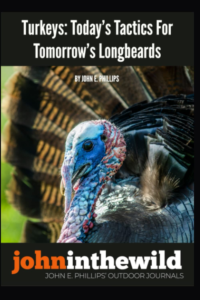
- hunting strategies with pros Will Primos, David Hale, Eddie Salter, Preston Pittman, Allen Jenkins, Terry Rohm, Paul Butski, Larry Norton and others.
- information about taking turkeys with .410 shotguns.
- box-call techniques.
- strategies for moving on turkeys.
- ways to hunt public-land gobblers.
- the differences in calling and hunting Eastern, Osceola and Western turkeys.
- the latest research on turkeys; and other information.
Click here to check out John’s 12th turkey book.
Expert Guidebooks on Turkey Hunting: Best Sellers
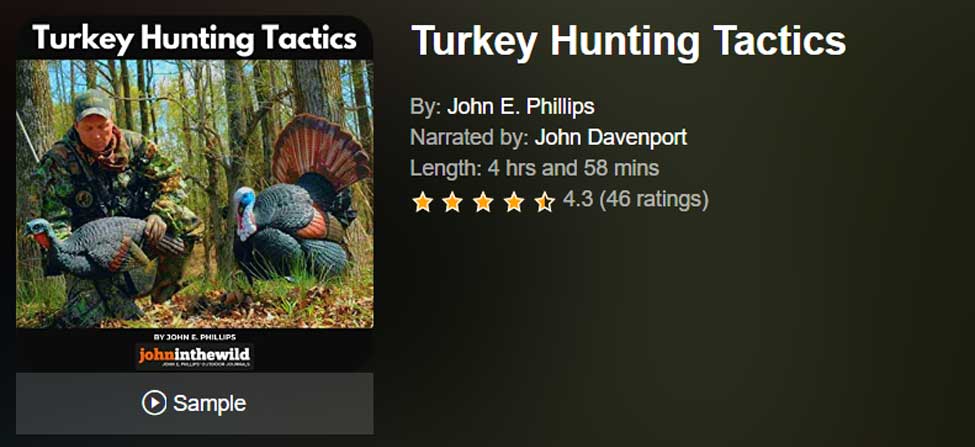
Turkey Hunting Tactics
This turkey hunting audiobook has entertaining chapters like: “How to Miss a Turkey”, “Hunting with a Guide”, and “The Turkey and the New York Lady”.
You’ll learn about all the subspecies of turkey across North America, how to use a turkey call, how to scout before turkey season, how to find a turkey to hunt, and what hunting gear you’ll need to put the odds in your favor to take a wily gobbler.
VERSIONS: AUDIBLE, KINDLE & PRINT
How to Hunt Turkeys with World Champion Preston Pittman
You easily can take a turkey if you don’t make any mistakes, but you have to know what the deadly sins of turkey hunting are to keep you from making those mistakes. If you understand how to hunt a turkey, you’re far more likely to take a gobbler than if you just know how to call a turkey.
Of course, calling is important, and if you want to learn to call a turkey, Preston Pittman will teach you how to call turkeys with box calls, friction calls, diaphragm calls, and other turkey sounds.
You’ll also learn why Preston Pittman once put turkey manure all over his body to kill a tough tom.
When you have turkeys that strut and drum in the middle of a field, when you know there’s no way to get close enough to get a shot, Pittman will show you some weird tactics that have worked for him to help you hunt tough ole toms.
But the main thing you’ll learn in this book is how to become the turkey.
Using what he’s learned while hunting wild turkeys, he’s also become a master woodsman who can take most game, regardless of where he hunts. To learn more secrets about how to be a turkey hunter from one of the world champions of the sport, this turkey-hunting book with Preston Pittman is a must.
VERSIONS: AUDIBLE, KINDLE & PRINT
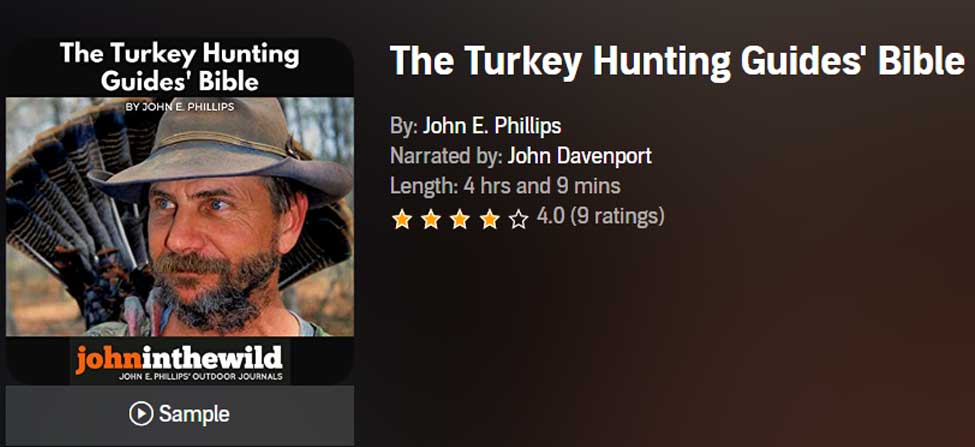
The Turkey Hunting Guides’ Bible
The quickest way to learn how to turkey hunt successfully is to either hunt with a turkey hunter with years of experience or a turkey-hunting guide. These two types of turkey hunters have solved most of the problems turkey hunters ever will face.
Just as one size of shoes won’t fit every person, one style of turkey hunting doesn’t fit each hunter. Each turkey-hunting guide interviewed for this book has his own style of calling, hunting, and outsmarting turkeys.
While listening to this book, make a list of the new information you’ve learned, take that list with you during turkey season, and try some of the new tactics. Then you’ll become a more versatile turkey hunter and prove the wisdom from The Turkey Hunting Guides’ Bible.
VERSIONS: AUDIBLE, KINDLE & PRINT
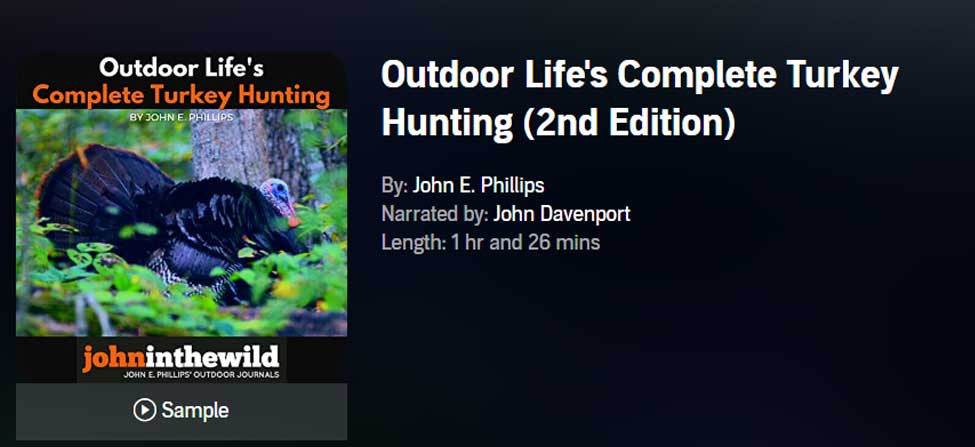
Outdoor Life’s Complete Turkey Hunting (2nd Edition)
This Audible book will help you learn how to call turkeys with two of the nation’s best, longtime and well-known turkey callers, Rob Keck, formerly with the National Wild Turkey Federation, and Lovett Williams, a wildlife biologist who recorded wild turkeys giving the calls that you’ll learn how to make on various types of turkey callers.
VERSIONS: AUDIBLE & KINDLE
Tomorrow: Remove Non-Commercial Trees to Improve Wildlife


